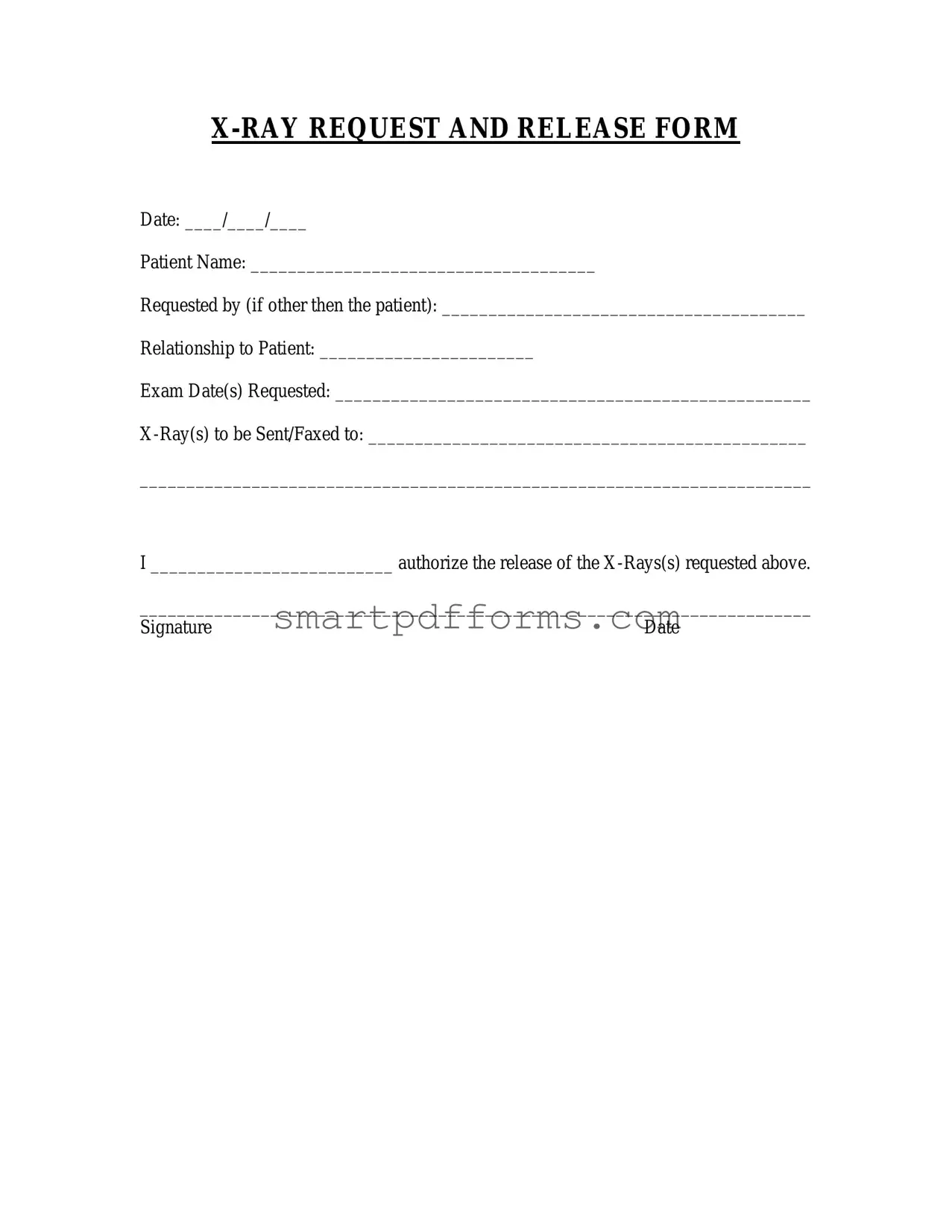Blank X Rays Request PDF Template
The X-Ray Request and Release Form serves as a crucial document that enables individuals to request and authorize the transfer of their X-ray records to specified recipients, be it for further medical consultation, personal records, or any other legitimate purpose. This straightforward form collects necessary details such as the patient's name, the relationship of the requester to the patient (if not the patient themselves), the specific dates of the X-rays in question, and the destination where the X-rays should be sent. To ensure your X-ray records are accurately and swiftly transferred to where they are needed next, it's important to fill out this form with care and precision. Ensure all your healthcare needs are met by clicking the button below to complete the form.
